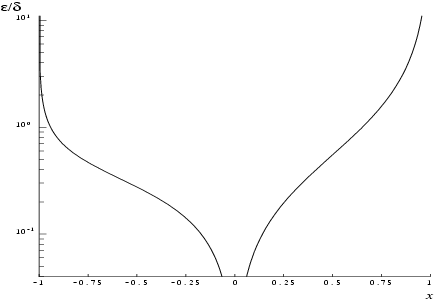NAG FL Interface
s09abf (arccos)
1
Purpose
s09abf returns the value of the inverse circular cosine, , via the function name; the result is in the principal range .
2
Specification
Fortran Interface
| Real (Kind=nag_wp) |
:: |
s09abf |
| Integer, Intent (Inout) |
:: |
ifail |
| Real (Kind=nag_wp), Intent (In) |
:: |
x |
|
C Header Interface
|
#include <nag.h>
| double |
s09abf_ (const double *x, Integer *ifail) |
|
C++ Header Interface
|
#include <nag.h> extern "C" {
| double |
s09abf_ (const double &x, Integer &ifail) |
}
|
The routine may be called by the names s09abf or nagf_specfun_arccos.
3
Description
s09abf calculates an approximate value for the inverse circular cosine,
. It is based on the Chebyshev expansion
where
.
For .
For .
For .
For is undefined and the routine fails.
4
References
5
Arguments
-
1:
– Real (Kind=nag_wp)
Input
-
On entry: the argument of the function.
Constraint:
.
-
2:
– Integer
Input/Output
-
On entry:
ifail must be set to
,
or
to set behaviour on detection of an error; these values have no effect when no error is detected.
A value of causes the printing of an error message and program execution will be halted; otherwise program execution continues. A value of means that an error message is printed while a value of means that it is not.
If halting is not appropriate, the value
or
is recommended. If message printing is undesirable, then the value
is recommended. Otherwise, the value
is recommended.
When the value or is used it is essential to test the value of ifail on exit.
On exit:
unless the routine detects an error or a warning has been flagged (see
Section 6).
6
Error Indicators and Warnings
If on entry
or
, explanatory error messages are output on the current error message unit (as defined by
x04aaf).
Errors or warnings detected by the routine:
-
On entry, .
Constraint: .
An unexpected error has been triggered by this routine. Please
contact
NAG.
See
Section 7 in the Introduction to the NAG Library FL Interface for further information.
Your licence key may have expired or may not have been installed correctly.
See
Section 8 in the Introduction to the NAG Library FL Interface for further information.
Dynamic memory allocation failed.
See
Section 9 in the Introduction to the NAG Library FL Interface for further information.
7
Accuracy
If
and
are the relative errors in the argument and the result, respectively, then in principle
The equality should hold if
is greater than the
machine precision (
is due to data errors etc.), but if
is due simply to round-off in the machine it is possible that rounding etc. in internal calculations may lose one extra figure.
The behaviour of the amplification factor is shown in the graph below.
In the region of this factor tends to zero and the accuracy will be limited by the machine precision. For close to one, , the above analysis is not applicable owing to the fact that both the argument and the result are bounded , .
In the region of we have , that is the result will have approximately half as many correct significant figures as the argument.
In the region , we have that the absolute error in the result, , is given by , that is the result will have approximately half as many decimal places correct as there are correct figures in the argument.
8
Parallelism and Performance
s09abf is not threaded in any implementation.
None.
10
Example
This example reads values of the argument from a file, evaluates the function at each value of and prints the results.
10.1
Program Text
10.2
Program Data
10.3
Program Results

